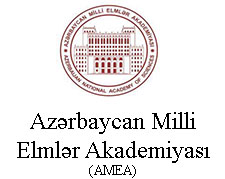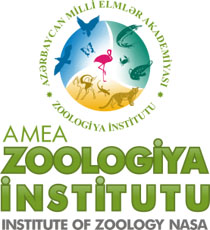The decrease in the number of purple scale insects entomophages paly special role of local fauna - predators Rhyzobius lophanthae Blaisd, Chilocorus bipustulatus L., Chilocorus renupustulatus (Scriba), parasites - Aphytis maculicornis Masi, Aspidiotiphagus citrinus Graw.
Rhyzobius lophanthae came to Azerbaijan somehow. Predator being effective entomophages refers to a family of Coleoptera, Coccinellidae. This predatory beetle homeland is Australia. At the end of the last century for use in biological control against scale insects brought back to California, and from there to Italy and other Mediterranean countries. By chance in 1947 were imported by Georgia-Abkhazia, scale insects found on mulberry pupa coccinella 2 (♀ and ♂). Coccinella were bred and used in the biological control of scale insects. This was used by Georgian entomophage entomologists in the biological fight against scale insects.
Despite the fact that coccinella in some areas of Georgia have adapted to the local climate and hibernated successfully, they are used in biological control against scale insects only by seasonal colonization. Probably, these predators are beneficial to Azerbaijan were from Georgia.
Predator Rhyzobius lophanthae under laboratory conditions propagated on potato tubers infected with purple scale insects. At a temperature of 250 S coccinella develops within 30-35 days. It should be noted that the term of Rhyzobius lophanthae on the purple and oleander scale insects are almost identical. But interestingly, the larvae feed on violet koktsinellid scale insects compared to larvae that feed on oleander scale insects can be smaller, these larvae are not yellow, and violet - yellow.
In nature Aphytis maculicornis hibernate in the adult larval stage. Monophagy parasite, is a specific parasite purple scale insects. females are flying and males are not marked. In winter the parasite in the laboratory at a temperature of 250 S off from the purple scale insects in within 18-20 days.
Under natural conditions in Khachmaz departure occurs during wintering pests II- III decade of May. The adults of the parasite found in the III decade of May and I decade of June. Basically they occur on various plants (even for non-infected plants). The parasite infects the young larvae and adults, mostly larvae II age. The parasite lays its eggs on the bottom of the shield on the body scale insects. Color of parasite eggs yellowish-white.
In the III decade of June, III decade of July flying larvae of I generation. The parasite has a 2 generation to one generation of the pest. Is polycyclic view, the year has 4 generation. Wintering pest infected with the parasite from 15.4% to 20%. The percentage of infestation in the month of August is high (between 28% and 47%).
Method of reproduction of the parasite under laboratory conditions is designed. The parasite multiplies in the potato tubers infected with purple scale insects. Aphytis maculicornis, multiplies in the body of adults scale insects. At a temperature of 250C parasite development occurs in the Big within 30-35 days. At 7-8 day development of eggs larvae. Initially the larvae are pale yellow, then in the process of further development, they have a dark yellow color. The body first oval, then it becomes elongated. The larvae feed on the body of scale insects, then move to the 3 larval stage and pupate, this process lasts for 20-35 days. At the end of the pupa is clearly visible meconium. The literature indicates that these droppings for certain types are specific. The pupae are dark yellow. The parasite is Endoparasites scale insects. The larvae of the parasite feeding on the entrails scale insects, develop and grow. Pupal development occurs within 8-10 days, and then go out adult parasites through the hole opening to shield the pest. Parasites are only females. They multiply by partogenetic. In nature, they live for a long time. In the laboratory, without feeding, they die within 2-3 days. When feeding sugar syrup they live 15-20 days.
A common parasite in the region Aphytis maculicornis unisexual females reproduce by pathogenese. Citing published data, it should be noted that the parasite living in Iran Aphytis paramaculicornis is very effective (Rosen De Bac,1979). In the future, this type can be started in Azerbaijan and applied against the destruction of the violet scale insects, which will give a huge effect.
Aspidiotiphagus citrinus is in effective in a parasite decline specified scale insects.















